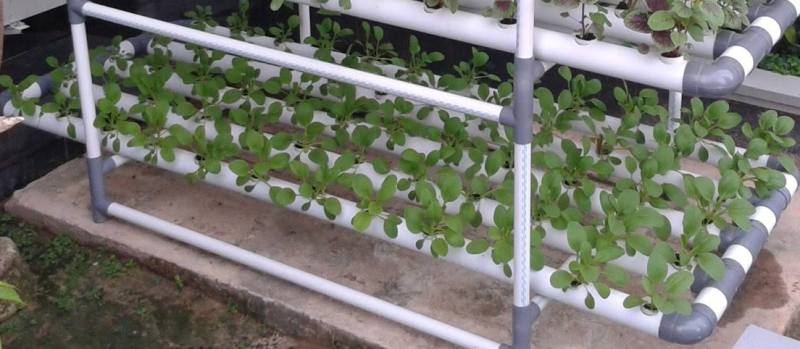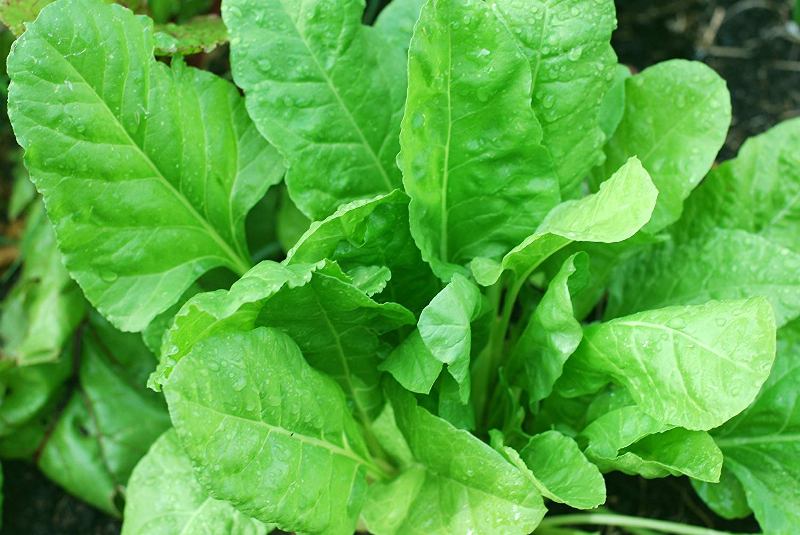Guide for Growing Spinach Hydroponically
Today, we discuss step by step of growing spinach hydroponically in your home garden. This topic also covers the spinach seeds germination in the hydroponic system and advantages of growing the spinach hydroponically.
How to grow Hydroponic spinach
This reminds me of the famous Popeye song “I’m strong to the finish cause I eat my spinach..I’m Popeye the sailor man’
How can we forget the tales of Popeye the sailor man where a cute man with huge biceps use to empty tins of spinach once consumed, his biceps would bulge and his new found strength helps him fight all enemies to save his girl and made us laugh our heart out. This cartoon character helped mothers all across the world to convince their children that eating spinach gives you instant superpower and yes children of that era ate spinach because their hero Popeye does the same. Oh, I guess too much of nostalgia has poured out. Well, whatever we see on television or web is more or less influenced by real life and real facts.

Read: How to Grow Fennel in Your Backyard.
Spinach does not just leave but they are the source of exceptional nutrients and have a number of health and beauty benefits. It has always been regarded as a plant with noteworthy abilities to restore energy, increase vitality and improve the quality of the blood. It contains a high amount of iron, vitamin K, vitamin A, vitamin C, and folate as well as it as a great source of manganese, magnesium, and vitamin B2. Vitamin K is found important for maintaining bone health and it is not easy to find vegetables richer in vitamin K than spinach. So with these endless qualities, spinach is easy to grow at home which makes more desirable.
The desire to harvest fresh, high-quality fruit and vegetables for a portion of healthy food is often a deciding factor when first stepping into hydroponic gardening.
Tasty, super fresh, and highly nutritious leafy greens just plucked from an indoor garden have to be one of the healthiest and most rewarding aspects of growing your own plants hydroponically without putting many efforts. So, today we will discuss How to grow spinach hydroponically at home
So let’s dive into growing spinach hydroponically in your home garden.
Spinach belongs to the Chenopodiaceae family), a family of dietary powerhouses including plants like beets, chard, and quinoa. Growing hydroponic spinach is simple to do, and there are a lot of immense reasons to do it. When you are raising hydroponic spinach you can harvest luscious and great nutritious plants very rapidly from seed constantly, over and over again.
Advantages of using hydroponics for growing spinach

Read: Growing Lentils in the Backyard.
Water conservation
One of the practical benefits of using hydroponics is great for conserving water in comparison to traditional cultivation methods. Very little water is lost to the atmosphere than the conventional soil gardens. in general, the only water loss is what is taken up and transpired through the leaves, while in soil gardening, a lot of water evaporates into the atmosphere from the exposed growing media as well as from the plant and due to exposed heating plant demands more water. Basically, in hydroponics gardening methods the water is only being applied directly where it is needed that too right in the root zone where it is required most.
Crop health and faster growth
By following few basic principles with an appropriate hydroponics system type, plants don’t have to struggle hard to get what they require for their growth and are far less likely to experience yield affecting stresses like drought and mineral imbalances. Moreover, the chance of insects or diseases attack that harm plants will diminish, this is because in hydroponics being cultivated in the controlled aseptic hydroponic system, so no more stress of consuming toxic fungicides and pesticides. It’s natural that a healthy crop will grow faster and healthy that the window of opportunity for problems to penetrate becomes much tapered.
Ease of Gardening
A hydroponics system can be programmed and operated as per your convenience if you don’t have extended backyard for gardening you can place your hydroponic system indoor without much affecting its yield. No stress of regular weeding, digging, monitoring when to water and other time consuming laborious tasks are required when you are soil gardening. Keeping crops up and off the soil also means fewer chances of insects or other predators getting to your crop and making gardening a headache for you. Hydroponics on a commercial level, the labor savings, freedom from season dependency and rapid cropping times can add up to significantly higher profit margin potentials.
Consistency
When you apply a small amount of specially formulated nutrient solution to water, there isn’t a difficult search for of mineral availability for your hungry plants like there can be with soil gardening methods where climate and water availability can have a big impact in how much your plants can draw essential nutrients for their optimum growth. Growing hydroponic spinach compared to soil grown spinach means you can harvest more crops, with consistent quality and yields. In a climate controlled greenhouse or indoor hydroponic garden you can get the high yield over and over, regardless of geographic location or climatic conditions.
Read: How to Prepare a Seedbed for Your Home Garden.
Spinach cultivation guide
Spinach can be propagated in any hydroponic system by using seeds. Answer to question How to germinate spinach seeds hydroponically is easy you just need to follow the given steps.

Start from sowing spinach seeds in the pro-trays/ seed starting trays or in nursery beds but for this, you have to be vigilant when transplanting and roots must be properly cleaned to get ward off soil particles and then keep pro-trays sufficiently moistened, covered in a dark place to let the seeds to germinate.
About the 3rd day after sowing, the seeds start to sprout. Now is the time to keep the pro-trays exposed to sunlight or grow lights for approximately about three to four hours. With regular care and watering, these small seeds will develop into healthy saplings within seven to eight days. It is now time to relocate them into the desired hydroponic system.
Spinach seed viability deteriorates swiftly with age, so seed that has been stored in open packets may not germinate or if germinate they may sprout unevenly with poor quality seedlings as a result. It is advised to purchase seeds in small lots and sow them immediately to avoid the need for long-term storage. Never let spinach seeds dry out, else the plants that will result perform poorly. Spinach germinates quickly at room temperature an optimum germination temperature of 64-68° Fahrenheit. Spinach is a cool weather crop, so don’t let temperatures get above 79° Fahrenheit anytime throughout the spinach growth stages. Make sure to give the seedling and germinating seeds at least 12 hours of light. Excessively warm temperatures condition will cause many varieties of spinach to “bolt” and making bitter tasting harvest. For indoor conditions, fluorescent lighting works great. No fertilizer is needed for the first seven to ten days. Germinating spinach in Rockwool or coco plugs is more efficient and often recommended way to raise spinach seedlings because this avoids the requirement for additional handling, tends to prevent transplantation shock, and helps prevent root damage.
For raising spinach you can opt for variety of hydroponic system, most used hydroponic system for cultivating as recommended by experts are DWC(deep water culture system), NFT (nutrient film technique) commercially as well as for home growers though Kratky spinach is also famous among growers. Because in these systems the growing plants receive more oxygen at the roots, only a small amount of fertilizer is required usually. In hydroponic systems, or “water culture” methods, there is little or no growing medium to be replaced or thrown away from time to time and the roots are suspended in a gentle flow of continuously circulated and aerated nutrient solution with nothing obstruct the way of absorbing the macro and micronutrients they require to grow faster and healthy, while offering supreme nutrition in harvests.
After successfully transplanting starting off with 1/8 to 1/4 strength of hydroponic nutrients for the first one to two weeks after transplant is suggested. After two weeks, or when plants look like they require it, you can increase the feeding strength of nutrients. The ideal pH to obtain high yield is in the range of 5.8–6.0 also take care to maintain adequate oxygen level in the system. Spinach may also be prone to leaf yellowing; this characteristically occurs under very cool growing conditions where the plant is not capable to take up sufficient iron, where roots have turn out to be damaged during transplanting, or where deoxygenation due to overwatering or nutrient stagnation has occurred.
Under properly maintained growing conditions, spinach can be a high-yielding crop can be harvested after 52 days growth. For harvesting cut or trim surfaces. Ideally, these should be consumed fresh within a few hours of harvest; however, if storage is required, the correct conditions to prolong shelf life are rapid cooling down to 34°F and 95-98 percent humidity.
That’s all folks about growing spinach hydroponically and advantages of growing hydroponic spinach.
Read: How to Make Coffee Powder.
I have recently bought a NFT hydroponic home kit and have located the same in front a full height French window in my flat at Mumbai. To start with I planted three types of seeds; Amaranth, Spinach and Methi.
Only amaranth seems to be growing but spinach and methi plants have all died.
Need your guidance to grow spinach’s new methi as we consume these two vegetables regularly.
NK